When exploring the vast world of Flavorful Chinese Sauces, few condiments are as iconic and essential as oyster sauce. However, not all bottles on the shelf are created equal. You may have noticed terms like "Top Grade," "Premium," or "First Extract" on labels. But exactly what is Top Grade Oyster Sauce, and is it worth the investment?
Defining Top Grade Oyster Sauce
Top Grade Oyster Sauce refers to the highest quality tier of oyster sauce available on the market. Unlike budget-friendly versions which are primarily thickened with cornstarch, sugar, and caramel color, top-grade versions rely heavily on real oyster extracts.
To be considered "Top Grade," the sauce typically must meet the following criteria:
High Oyster Extract Content: It is made from the concentrated broth of slowly simmered oysters.
Complex Flavor Profile: It offers a balance of savory (umami) and sweet notes, without being overly salty.
Rich Consistency: The texture is smooth and velvety, naturally thick from the reduction process rather than excessive thickeners.
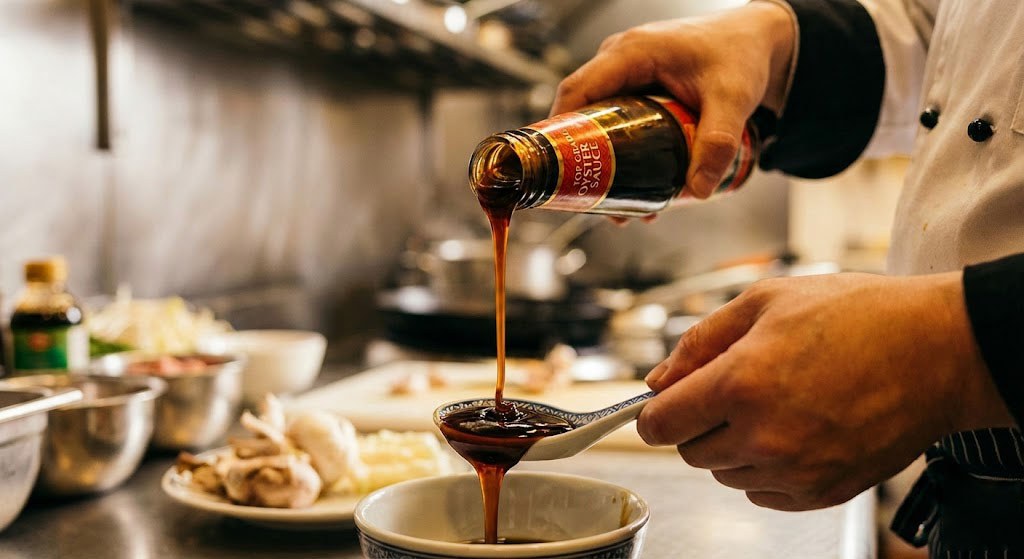
The Difference Between Standard and Premium Oyster Flavoured Sauce
When shopping, you will often see labels saying "Oyster Flavoured Sauce." While this is the industry standard term, a Premium Oyster flavoured sauce stands out due to its concentration.
Standard sauces are often diluted to lower costs, making them suitable for high-volume commercial cooking but lacking depth. In contrast, premium or top-grade sauces are designed for finishing dishes, marinades, or dipping, where the true flavor of the oyster can shine.
| Feature | Top Grade Oyster Sauce | Standard / Economy Oyster Sauce |
| Main Ingredient | Real Oyster Extract (High %) | Water, Starch, Sugar, Oyster Essence |
| Flavor Profile | Deep umami, earthy, complex | Sweet, salty, one-dimensional |
| Texture | Glossy, moderately thick | Very thick (gel-like) or runny |
| Price Point | Higher | Budget-friendly |
| Best Use | Dipping, finishing sauces, premium marinades | High-volume stir-fries, braising |
FAQ
Q: Does Top Grade Oyster Sauce taste like fish?
A: No. Despite being made from seafood, a high-quality Premium Oyster flavoured sauce does not taste "fishy." It has an earthy, savory, and slightly sweet taste known as umami.
Q: Is Top Grade Oyster Sauce gluten-free?
A: Not always. Most oyster sauces use wheat flour as a thickener. If you are gluten-intolerant, look specifically for "Gluten-Free" on the label, even if it is a premium brand.
Q: How should I store my oyster sauce?
A: Once opened, all oyster sauces, especially Top Grade Oyster Sauce which has fewer preservatives, should be refrigerated. It can last for up to 6 months in the fridge.
Q: Can I use it as a dipping sauce?
A: Yes! Because top-grade versions have a superior flavor, they are excellent when used straight from the bottle as a dipping sauce for boiled chicken or blanched vegetables.
Understanding what is Top Grade Oyster Sauce allows you to make better choices in the kitchen. While standard sauces get the job done for basic meals, investing in a Premium Oyster flavoured sauce unlocks the true potential of authentic Asian cooking.
Next time you are looking to stock your pantry with Flavorful Chinese Sauces, check the ingredient list. If "Oyster Extract" is near the top, you know you are buying quality.
Expo Recap | Greenfresh Shine at FIC 2025
March 17, 2025
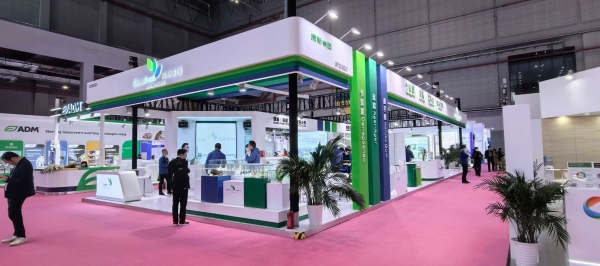
The 28th China International Food Additives and Ingredients Exhibition (FIC 2025) grandly opened at the Shanghai National Exhibition and Convention Center on March 17, 2025. As a premier global gathering for food industry innovators, the event brought together suppliers and buyers worldwide to showcase cutting-edge products and technological trends, fostering collaboration and exchange for the advancement of the food sector.
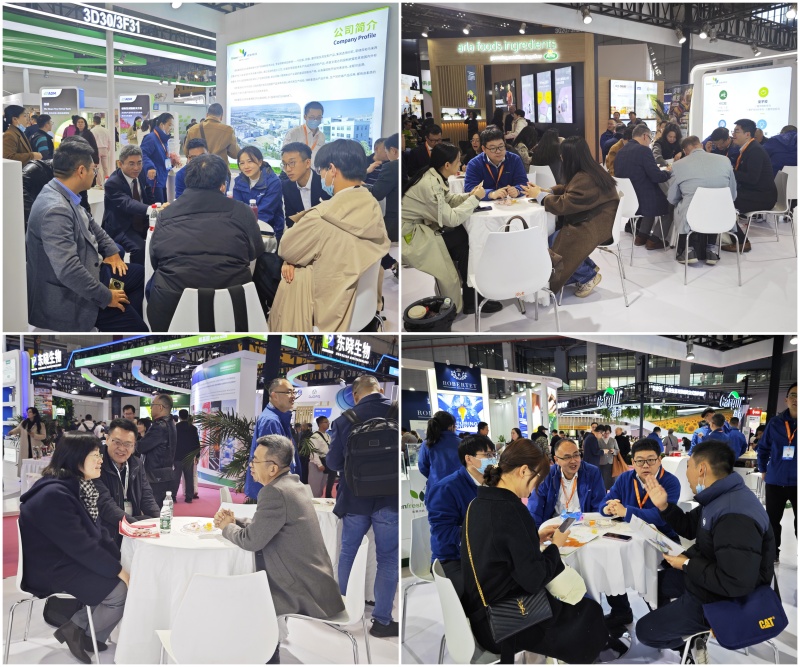
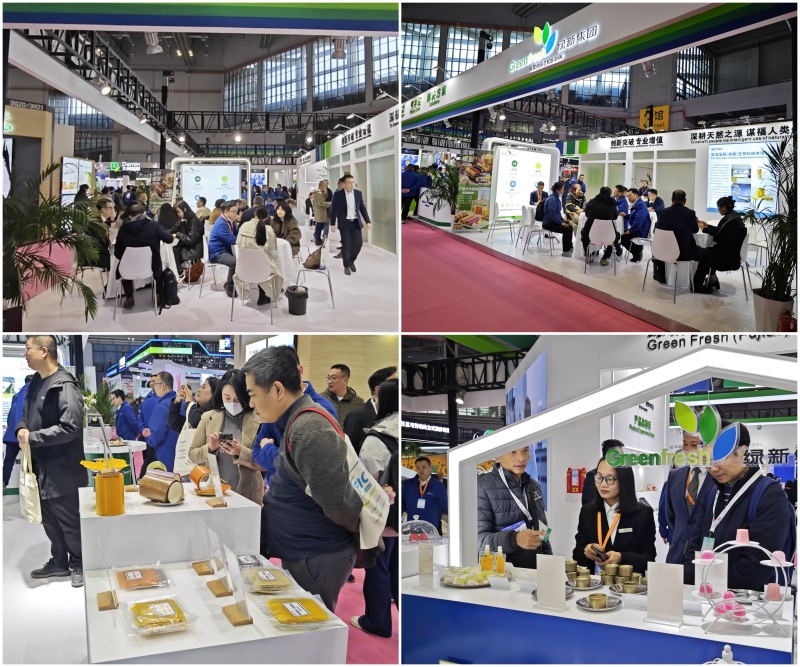
Our Booth: 3F20/3G21
Venue: National Exhibition and Convention Center, Shanghai, China
Dates: March 17–19, 2025
We extend our sincere gratitude to both longstanding and new clients for your visit and support. Should you have any inquiries or needs, Greenfresh Group stands ready to provide expert texture solutions tailored to your requirements.
Looking ahead, we eagerly anticipate broader collaboration opportunities to jointly pioneer a brighter future for the food industry.
Expo Recap | World Food Poland
A heartfelt thank you to all who visited Green Fresh Group at Stand Option 5 in Warsaw!
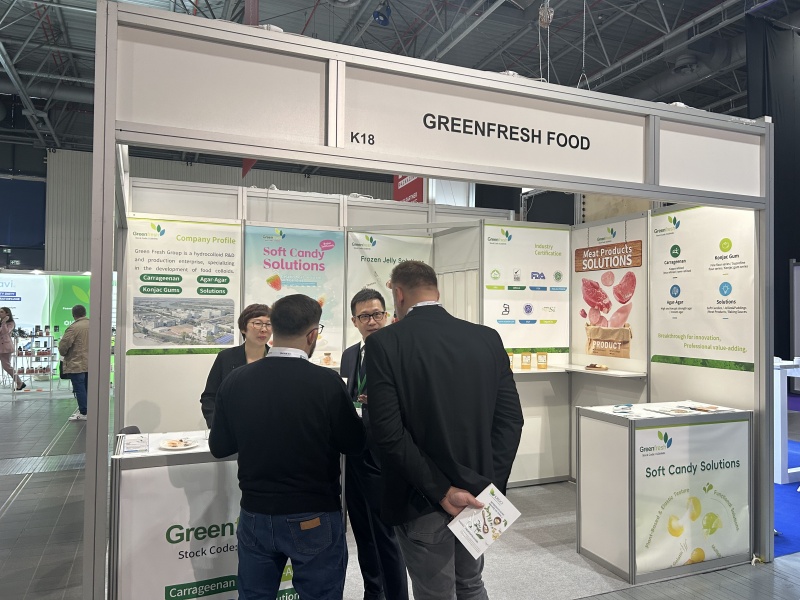
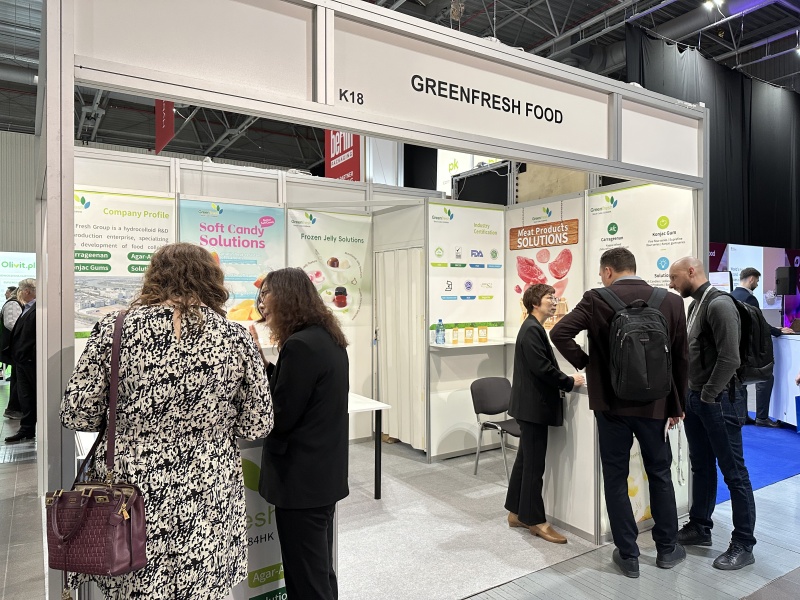

See you at the next show! 🌍✨
Expo Review | ISM Cologne 2025
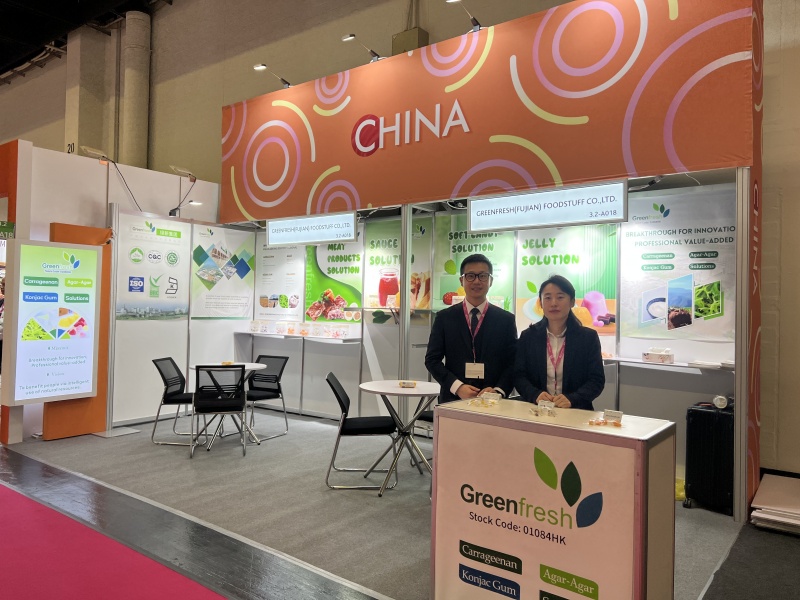
From February 2nd to 5th, 2025, Green Fresh Group shone brightly at the ISM (International Sweets and Snacks Fair) held at the Cologne International Exhibition Center in Germany.
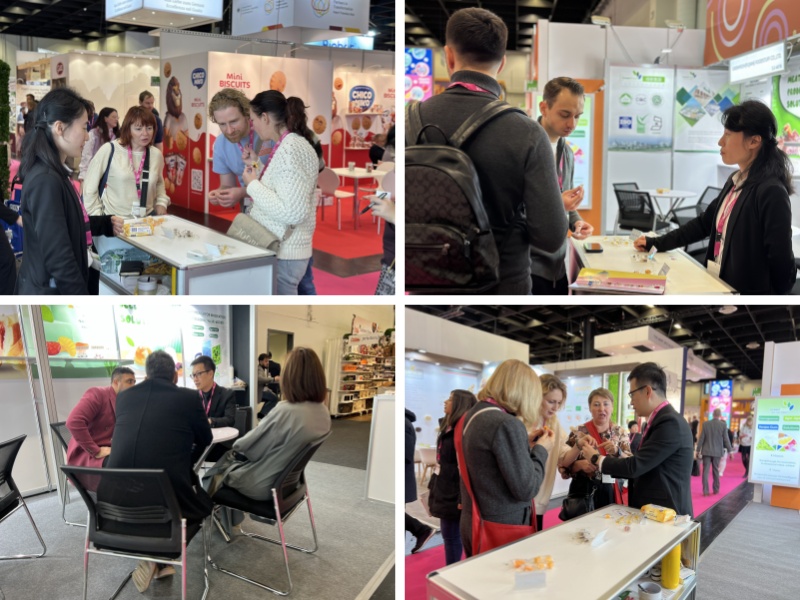
Sincerely thank our customers for their presence and support. If you have any questions or needs, please feel free to communicate with us. Green Fresh group can provide you with exclusive solutions to meet your needs.
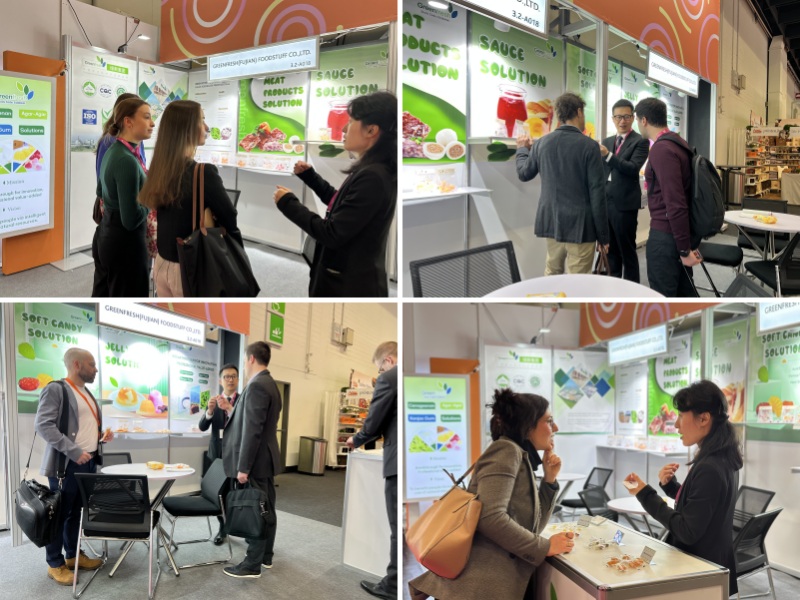
Choosing the right sauce paste manufacturer is one of the most important decisions for businesses involved in food service, retail, or food processing. A reliable production partner does more than supply products; it supports consistency, scalability, and long-term brand credibility. Whether you are launching a new product line or optimizing an existing supply chain, understanding how to evaluate a manufacturer can help avoid costly mistakes.
Start with a Clear Understanding of Your Business Needs
Before contacting any supplier, it is essential to define your own requirements. Businesses vary widely in their expectations. Some focus on large-volume foodservice distribution, while others target retail shelves or export markets. Each scenario demands different production standards, packaging options, and logistics capabilities.
For example, a company selling sauces to restaurants may prioritize bulk packaging and stable year-round supply, while a retail brand may need flexible labeling, smaller packaging formats, and consistent visual appearance. A qualified Sauce Paste Manufacturer should be able to adapt to these differences without compromising product quality.
Evaluate Product Range and Flavor Expertise
A manufacturer’s product portfolio often reflects its technical strength and market experience. Companies with a narrow focus may struggle to support product expansion later on. In contrast, a broad and well-developed range indicates deeper knowledge of raw materials, processing methods, and flavor balancing.
Consider traditional sauces such as Plum Sauce. While it may seem straightforward, producing a balanced plum sauce requires careful control of sweetness, acidity, and fruit flavor. Markets differ in taste preference, and an experienced manufacturer understands how to adjust formulations without losing authenticity. Reviewing existing products like Plum Sauce can provide insight into how well a supplier handles flavor consistency and market adaptability.
Ingredient Sourcing and Quality Control Matter More Than Price
Cost is always a factor, but focusing solely on price can lead to long-term problems. Reliable manufacturers invest heavily in ingredient sourcing, quality inspection, and batch control. These systems ensure that every production run meets the same standards, which is especially critical for businesses operating at scale.
Take Sweet Chilli Sauce as an example. Its quality depends on the balance between chili heat, sweetness, and acidity, as well as the quality of peppers and sugar used. Manufacturers with strong quality control systems are better equipped to maintain uniform taste and texture across large volumes. Reviewing products such as Sweet Chilli Sauce helps demonstrate whether a supplier can consistently deliver this balance.
Production Capacity and Scalability
As your business grows, your manufacturing partner must be able to grow with you. Some suppliers perform well with small orders but struggle when demand increases. Others may require volumes that are unrealistic for new brands.
A dependable sauce paste manufacturer should offer scalable production solutions, allowing you to increase order quantities without changing formulations or compromising lead times. This flexibility is particularly valuable for businesses entering new markets or responding to seasonal demand.
Customization and Private Label Capabilities
Many businesses require more than off-the-shelf products. Custom recipes, adjusted flavor profiles, and private labeling are increasingly common, especially for brands looking to differentiate themselves.
Manufacturers with in-house R&D teams are better positioned to support these needs. They can modify sweetness levels, spice intensity, or texture while maintaining food safety and shelf stability. This is especially useful for products like plum sauce and sweet chilli sauce, where small changes can significantly impact consumer preference.
Food Safety Standards and Regulatory Compliance
Compliance is a non-negotiable aspect of modern food manufacturing. A professional supplier should meet recognized food safety standards and be familiar with regulatory requirements in different markets. This is particularly important for export-oriented businesses, where labeling rules, permitted ingredients, and documentation requirements vary widely.
Manufacturers with extensive international experience are usually better prepared to handle these complexities, reducing the risk of shipment delays or rejected products.
Reputation, Transparency, and Communication
Finally, consider the manufacturer’s reputation and communication style. Transparent processes, clear documentation, and responsive communication often indicate a well-managed operation. Long-term partnerships are built on trust, and reliable manufacturers are open about their production processes, certifications, and capabilities.
Taking time to evaluate these factors can make the difference between a short-term supplier and a long-term strategic partner. In a competitive market, working with the right sauce paste manufacturer provides stability, supports brand growth, and allows businesses to focus on what they do best—serving their customers and expanding their reach.
Solidified Soy Sauce Safety
Food Safety Overview
You want to know if Solidified Soy Sauce is safe. The answer is yes. Pearl River Bridge follows strict quality control steps. The company checks every batch to make sure it meets food safety rules. You can trust that the product is safe for you and your family.
Pearl River Bridge uses modern equipment and careful testing. The company follows all food safety laws. You get a product that is clean and safe to eat. If you see any changes in color, smell, or texture, do not use it. Always check the package before you use it.
Tip: Keep Solidified Soy Sauce in a cool, dry place. Close the container tightly after each use. This helps keep the product fresh and safe.
Common Ingredients
You might wonder what goes into Solidified Soy Sauce. The main ingredients are simple and easy to understand. Here is a table that shows what you will find in most products:
|
Ingredient |
Quantity |
|---|---|
|
Soy Sauce |
¾ cup |
|
Agar Powder |
2 grams |
|
Vegetable Oil |
At least 3 cups |
Soy sauce gives the product its rich flavor. Agar powder helps it keep its solid form. Vegetable oil makes it smooth and easy to use. Pearl River Bridge uses high-quality soybeans and natural ingredients. You get a product that tastes great and is safe to eat.
Health Considerations
Solidified Soy Sauce is safe for most people. It comes from fermented soybeans, which can help your digestion. The product also has antioxidants that support your health. Pearl River Bridge makes sure the product is safe for children and adults.
If you have allergies to soy or gluten, check the label before you eat it. Always store the product in a cool, dry place. If you see mold or smell something odd, throw it away. Do not eat it if you think it has gone bad.
Note: Solidified Soy Sauce is safe for kids, but you should always watch young children when they eat. The product is easy to store and lasts a long time if you keep it sealed and dry.
What Is Solidified Soy Sauce
Definition
Solidified Soy Sauce is not a liquid. It is solid or semi-solid. You can use it in many ways. It tastes deep and savory like regular soy sauce. The smell is strong and familiar. This form is easy to store and handle. Pearl River Bridge makes it by fermenting soybeans for over 100 days. The long fermentation gives it a rich taste. It also makes it more nutritious.
Tip: Crystals in Solidified Soy Sauce are normal. They do not mean the product is bad.
Differences From Regular Soy Sauce
Solidified Soy Sauce is thicker than regular soy sauce. Regular soy sauce is a liquid. The solid kind can be sliced or scooped. This makes it easy to measure and use. You can move it without spilling. The solid form keeps the flavor fresh until you need it.
Fermentation changes the nutrition of the sauce. Here is what happens:
|
Aspect of Fermentation |
Impact on Nutritional Content |
|---|---|
|
Protein Digestibility |
Microbes break down proteins. This makes them easier to digest. |
|
Free Amino Acids |
More amino acids are made. These help with flavor and nutrition. |
|
Microbial Community |
Microbes help make flavor and improve quality. |
Production Process
Making Solidified Soy Sauce is interesting. Here are the steps:
-
Soybeans ferment in wooden barrels after the Kibiki process.
-
Brewers use shovels to scoop out the solid parts.
-
They slice the solid pieces thinly.
-
The slices are pressed twice to get more flavor.
Fermentation breaks down proteins into amino acids. This helps your body digest the sauce. It also makes the sauce taste better and adds nutrition. Solidified Soy Sauce is tasty and good for you.
Uses In Food Production
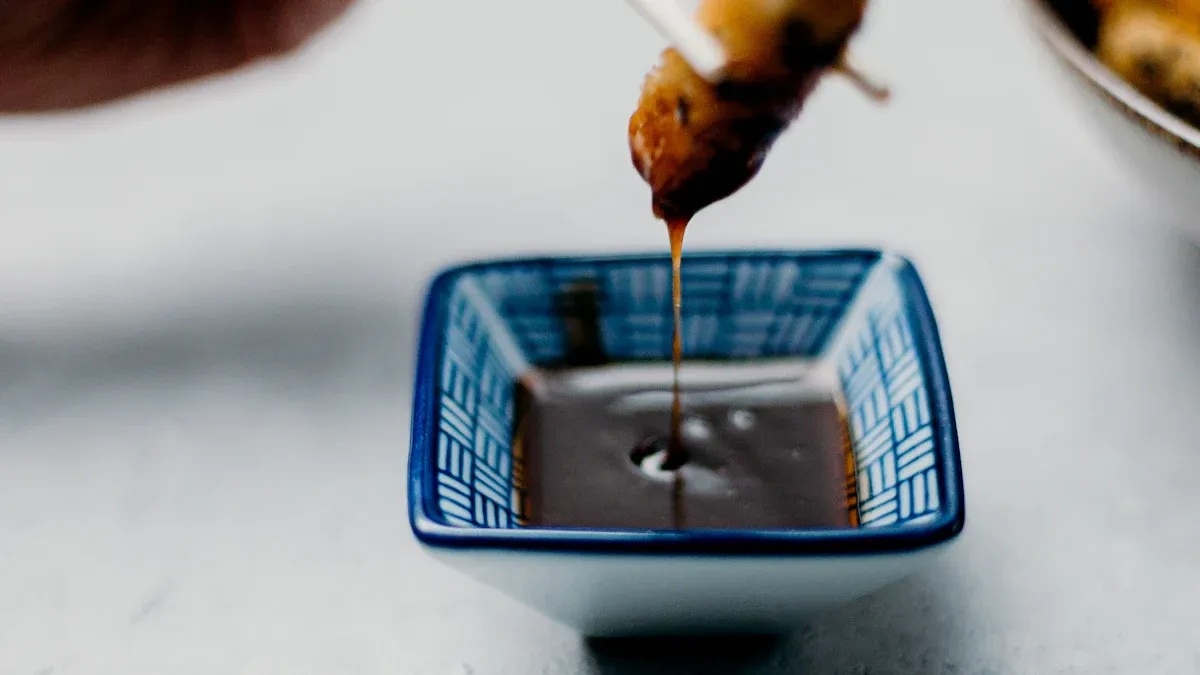
Culinary Applications
Solidified Soy Sauce can go in many foods. It works in stir-fries, marinades, and as a dip. You can add it to soups or stews for more flavor. Some chefs use it to glaze meats or vegetables. You can slice or grate it on noodles or rice. The solid form helps you use just the right amount.
Tip: Mix Solidified Soy Sauce with other things to make your own sauce.
Benefits For Manufacturers
People who make food see many good things about it. Solidified Soy Sauce costs less to ship because it is lighter. It is easy to store and can be used to make liquid soy sauce. Manufacturers like that it works in many recipes. You can blend it in or use it to boost flavor. It saves money and time and keeps the taste the same.
-
Lower shipping costs
-
Easy to measure and use
-
Same flavor in big batches
Storage And Shelf Life
You want Solidified Soy Sauce to stay good. Keep unopened packs at room temperature for years. After opening, keep it at room temperature for up to three months. If you put it in the fridge, it can last six to twelve months.
|
State |
Storage Condition |
Shelf Life |
|---|---|---|
|
Unopened |
Room temperature |
A few years |
|
Opened |
Room temperature |
2 to 3 months |
|
Opened |
Refrigerated |
6 to 12 months |
Soy sauce stays fresh because it has a lot of salt. You do not have to put it in the fridge, but it helps the flavor last. Always look for changes in color, smell, or texture. If you see mold or smell something weird, throw it away.
You have learned that Solidified Soy Sauce is safe and tastes good. It is simple to use in many foods. Pearl River Bridge makes sure the quality stays high. This product is easier to use than other seasonings. It also lasts longer on your shelf.
|
Benefit |
Solidified Soy Sauce |
Other Seasonings |
|---|---|---|
|
Convenience |
High |
Varies |
|
Shelf Life |
Longer |
Shorter |
|
Sustainability |
More sustainable |
Varies |
Try using it at home and notice how it changes your food!
FAQ
Can you eat Solidified Soy Sauce straight from the package?
Yes, you can. Pearl River Bridge makes sure it is safe and ready to eat. Just check for any spoilage before using.
Does Solidified Soy Sauce need to be refrigerated?
You do not have to refrigerate it. If you want it to last longer, put it in the fridge after opening.
What dishes work best with Solidified Soy Sauce?
You can use it in stir-fries, soups, marinades, or as a topping. Try slicing or grating it over rice or noodles for extra flavor.
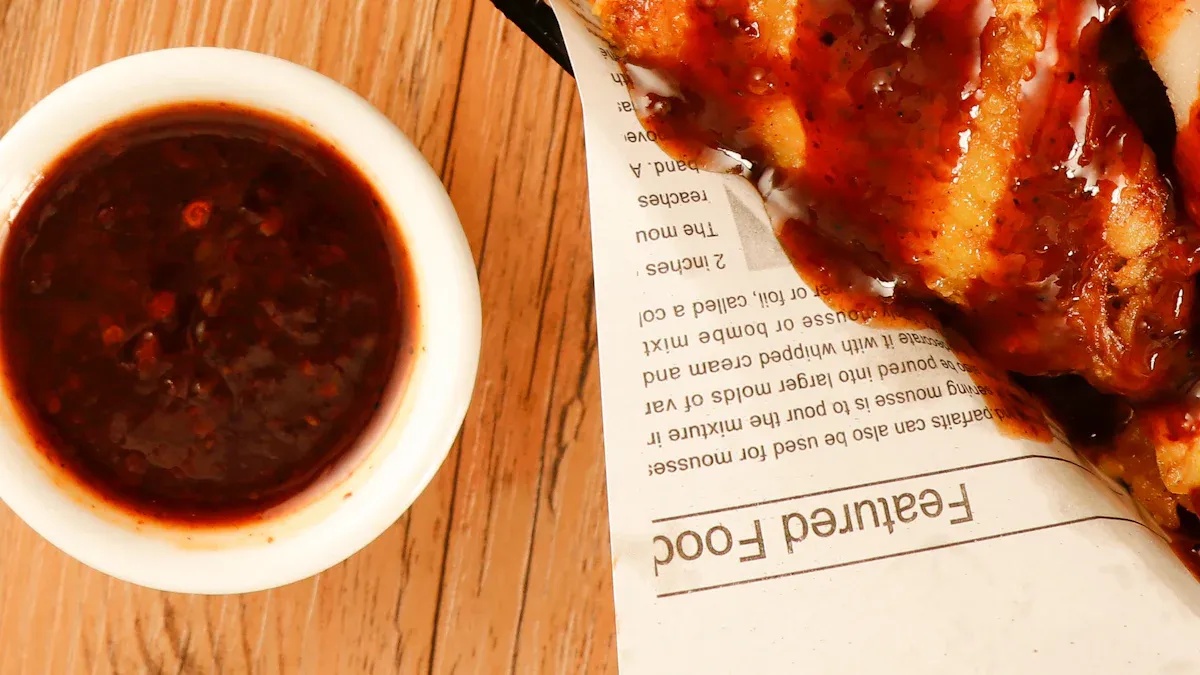
Ever tried sweet chilli sauce on plain chicken or rice? You taste the difference right away. Pearl River Bridge Sweet Chilli Sauce gives you sweet and spicy flavors in one bottle. You can dip, marinate, or cook with it. Even if you never cook, you can make boring food exciting fast.
Why Use Sweet Chilli Sauce
Flavor Boost for Bland Food
Sometimes food tastes boring. You want it to taste better. Sweet chili sauce helps with that. It mixes sweet, spicy, and tangy flavors. These flavors make your mouth feel excited. Scientists say sauces like sweet chili sauce improve taste. They add salt and umami to food. Eating food with tasty sauce makes you feel happier. The look of the bottle and brand can make you want it more.
Check out this table to see how sweet chili sauce compares to other popular condiments:
| Condiment | Flavor Profile Description | Consumer Preference Comparison |
| Sweet Chili Sauce | Balanced sweet, spicy, and tangy flavors; milder than hot sauces. | Appeals to those preferring moderate spice levels and complex flavors. |
| Sriracha | Hotter with less sweetness; garlic-forward flavor. | Primarily serves as a heat source, less appealing to those avoiding extreme spice. |
| Hoisin | Much sweeter and thicker; lacks the acidity of sweet chili sauce. | More suited for those who enjoy a molasses-like sweetness rather than balanced flavors. |
| Gochujang | Deeper, fermented heat with less sweetness; umami character. | Attracts consumers looking for a distinct umami flavor rather than a balanced condiment. |
Versatility in Everyday Cooking
Sweet chili sauce works with many foods. You can dip spring rolls in it. You can glaze grilled meats with it. You can put it on salads. It fits in Vietnamese, Filipino, Japanese, Chinese, Korean, and some African dishes. Making sweet chili sauce at home is easy. You only need a few ingredients. Pearl River Bridge sells 730G Sweet Chilli Sauce. It is good for families and parties. The sauce is smooth and tastes bright. You can use it for stir-fries, snacks, and sweet chilli garlic sauce recipes.
Sweet chili sauce is also good for your health. Red chili peppers have capsaicin. Capsaicin helps your body burn energy. Vinegar helps your stomach digest food. Natural sweeteners give flavor without fake stuff. If you want to make sweet chili sauce, mix it with veggies or meats. Your food will taste better fast.
Quick Sweet Chili Sauce Recipe Ideas
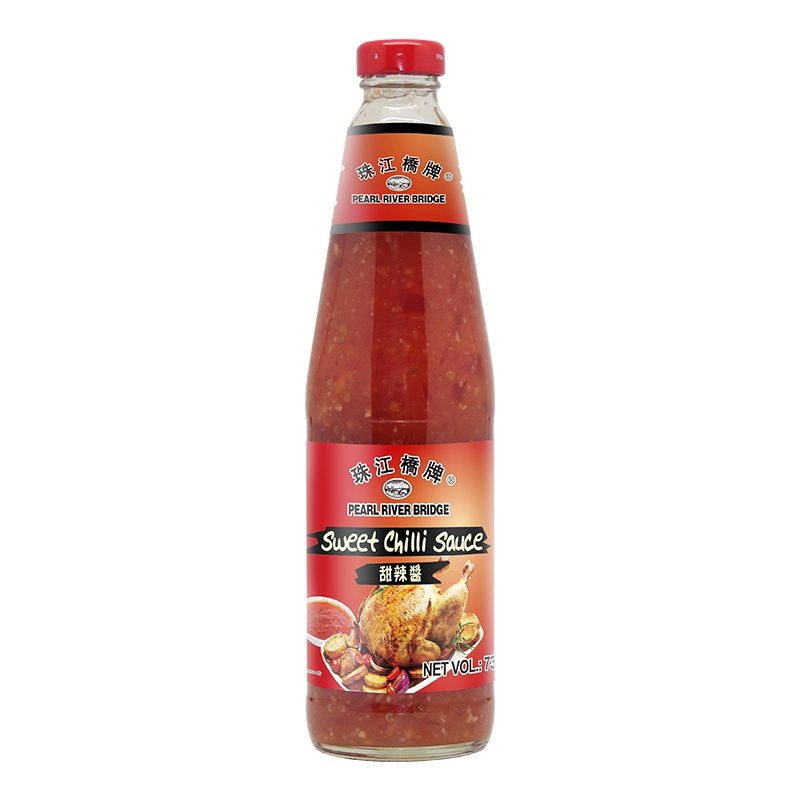
You can make chili sauce at home. It is easy and fast. You need just a few things. Most people have these in their kitchen. Here is a simple recipe that many food bloggers like:
1. Get your ingredients:
- Cornstarch
- Rice vinegar
- Sugar
- Chili garlic sauce
- Tamari or gluten-free soy sauce
2.Mix cornstarch with cold water until smooth.
3.Put rice vinegar, sugar, chili garlic sauce, and soy sauce in a pot.
4.Add the cornstarch mix to the pot.
5.Cook until it boils and gets thick.
6.Let it cool down and put it in the fridge.
When you make chili sauce at home, you choose the taste and texture. Homemade sauce tastes fresher. You can pick how spicy you want it. Here is a table that shows how homemade and store sauces are different:
| Aspect | Homemade Sauce | Commercial Sauce |
| Ingredient Quality | High-quality, fresh ingredients | May contain artificial additives |
| Flavor Profile | Fresher taste, customizable heat levels | Often thicker, may have artificial flavors |
| Texture | Lighter, less viscous | Thicker consistency due to thickeners |
| Preservatives | None | Often contains preservatives |
| Sweetness Source | Typically uses palm sugar | Often uses high fructose corn syrup or cane sugar |
| Garlic Notes | More pronounced garlic flavor | May lack depth in garlic flavor |
| Chili Variety | Uses bird's eye chilies for complex heat | May use different chili varieties |
If you want something faster, Pearl River Bridge Sweet Chilli Sauce is ready to use. It is smooth and tastes bright. You can dip, mix, or use it for sweet chilli garlic sauce.
Sweet Chili Sauce Pairings
Thai sweet chili sauce goes well with many foods. You can dip, pour, or mix it with your favorite meals. Try these classic pairings:
- Grilled chicken
- Fried chicken
- Fried rice (vegetable or seafood)
- Noodle dishes (stir-fried or cold)
- Thai fish cakes
- Thai chicken salad
- Meatballs
- Pulled pork sandwiches
People use thai sweet chili sauce for dipping fried foods. It tastes sweet and a little sour from vinegar. The mild spice makes crunchy and salty foods taste better. Try it with fried chicken, spring rolls, or fried tofu. You can also use it as a glaze for grilled meats or on noodle bowls.
Homemade Chili Sauce for Snacks
Snacks taste better with homemade thai sweet chili sauce. You can dip, glaze, or drizzle it on snacks. Here are some snack ideas that go great with sweet chili sauce:
- Glaze for chicken wings
- Cream cheese for a fast appetizer
- Baked or fried chicken wings with sweet chili sauce
- Fried cauliflower bites or veggie tempura with sweet chili sauce
- Chicken, pork, or veggie skewers as a dip
You can also use sweet chilli garlic sauce with crispy snacks. It gives more flavor and a little heat. Pearl River Bridge Sweet Chilli Sauce makes snack time simple. Just pour, dip, or toss. You do not need cooking skills.
Remember, sweet chilli sauce tastes great, but it has sugar and salt. Eating too much can add extra calories and sodium. Enjoy it in small amounts for a healthy balance.
Tips for Maximum Flavor
Mixing and Dipping Techniques
You want your food to taste amazing, right? Try using thai sweet chili sauce as a dipping sauce for chicken, shrimp, or rolls. Chefs love it with crispy fried lumpia, steamed dumplings, and chicken tenders. You can also use it as a glaze for meats like turkey or pork meatballs. If you like salmon or stir fry, add thai sweet chili sauce in the last few minutes of cooking. For a creamy twist, mix it with mayonnaise or cream cheese. This flavorful sauce works great with veggies and chips, too.
Marinating with Sweet Chilli Sauce
Marinating brings out the best flavors in your food. Pearl River Bridge Sweet Chilli Sauce makes it easy. Use it to marinate chicken thighs, shrimp, or firm tofu. Check out this table for the best marinating times:
| Ingredient Type | Best Options | Marinating Time |
| Proteins | Chicken thighs | 2-4 hours |
| Shrimp | 30 minutes | |
| Firm tofu | 1-2 hours | |
| Pork tenderloin | 2-6 hours | |
| Vegetables | Broccoli florets | N/A |
| Portobello mushrooms | N/A | |
| Asparagus | N/A | |
| Carrots (thick slices) | N/A | |
| Bell peppers | N/A | |
| Timing Guidelines | Delicate fish | 20-30 minutes |
| Chicken breast | 1-2 hours | |
| Beef | 4-8 hours | |
| Temperature | Always marinate in fridge | N/A |
Always marinate in the fridge. You get juicy, tasty results every time.
Reader Favorite Combos
People love sharing their favorite ways to use thai sweet chili sauce. Here are some combos you might want to try:
- Pour over cooked chicken strips, add peppers and lettuce for a fresh wrap.
- Mix with vinegar, lemon juice, honey, and garlic for a tangy marinade.
- Drizzle on nuts and roast for a sweet snack.
- Pour over prawns while pan frying for spicy seafood.
- Add to cooked new potatoes for a tasty side.
- Use as a dip for crisps, celery, carrots, or anything you like.
- Spread on toast, top with cheese, and grill for a cheesy treat.
- Mix with cream cheese and stir into pasta.
- Pour over salmon fillet and bake in foil for flavorful fish.
- Mix with mayonnaise for a sweet chili mayo—great on veggie burgers.
Pearl River Bridge Sweet Chilli Sauce turns everyday meals into something special. You don’t need fancy skills. Just pour, mix, or dip and enjoy bold flavor fast.
Sweet chilli sauce makes any meal taste better fast. Try Pearl River Bridge Sweet Chilli Sauce on your food. You can mix, dip, or marinate with it. Use your imagination to make meals fun. Brands like Blue Dragon and Lee Kum Kee show new ideas online. They use social media to help people try sweet chilli sauce in different ways.
FAQ
Can I use Sweet Chilli Sauce as a marinade?
Yes! You can marinate chicken, shrimp, or tofu with Sweet Chilli Sauce. It adds sweet and spicy flavor fast.
What snacks taste best with sweet chilli garlic sauce?
Try sweet chilli garlic sauce with chicken wings, veggie sticks, or crispy spring rolls. You get a tasty snack every time!
Cooking wine stands out from regular drinking wine because producers design it specifically for use in recipes. You need to understand this difference to get the best results in your kitchen. Using the right type of wine can boost the flavor of your food and help you cook safely. When you choose wisely, you make every dish taste better.

Cooking Wine vs. Drinking Wine
What Is Cooking Wine?
You find cooking wine in the grocery store, often near the vinegars and oils. Producers make it for use in recipes, not for sipping at the table. Salt Cooking Liquor for Stir-fry usually contains added salt. These ingredients help the wine last longer after you open the bottle. You use cooking wine to add depth and acidity to sauces, marinades, and braises. The flavor stands up to heat and blends well with other ingredients. Most home cooks choose it for convenience and shelf stability.
What Is Drinking Wine?
Drinking wine is the type you see served at restaurants or enjoyed at home with meals. Winemakers focus on flavor, aroma, and balance. You taste a range of notes, from fruity to earthy, depending on the grape and region. Sommeliers often help you pair wine with food to enhance your dining experience. Drinking wine can:
-
Enhance a variety of cuisines, from simple to complex dishes.
-
Offer a tasting experience where you detect individual flavors from a mix of organic molecules.
-
Benefit from ideal serving temperatures that bring out the best in each wine.
You enjoy drinking wine for its complexity and the way it complements food.
Why the Difference Matters
Choosing the right wine for your recipe makes a big difference. Cooking wine offers a convenient and cost-effective solution, pre-seasoned with salt and preservatives, making it ideal for long braises and stews where deep flavor infusion and extended shelf life are priorities. Drinking wine, conversely, provides pure grape flavor and a smoother finish. When you understand these differences, you can strategically use each type of wine to achieve the best flavor balance and convenience for your chosen dish.
Key Differences in Cooking Wine
Ingredients and Additives
When you choose a bottle of cooking wine, you are selecting a product specifically designed for the demands of the kitchen. Beyond fermented grapes, producers strategically include ingredients like salt. These additives are a key advantage, ensuring the wine remains fresh and reliable long after opening, offering unparalleled convenience and shelf stability for home cooks. Unlike drinking wines, which prioritize pure sipping flavor, cooking wine's composition is tailored for heat application; the added components help the flavor stand up to high temperatures and blend seamlessly into complex sauces.
Sodium Content and Safety
Cooking wine's high sodium content is a deliberate feature, enhancing its role as a seasoning liquor. This pre-seasoning simplifies the cooking process, often reducing the need to measure separate salt additions, which is highly convenient for marinating and quick seasoning. The salt is also critical for its extended shelf life. However, awareness is key: if you integrate cooking wine into a dish, you must remember to adjust or reduce any other added salt to maintain flavor balance and manage sodium intake. Drinking wine offers a blank canvas for seasoning control, but cooking wine provides a robust, pre-salted foundation that, when used mindfully, can greatly streamline flavor development in stews and braises.
Intended Use in Cooking
You use cooking wine for specific culinary tasks. Professional chefs rely on it to enhance flavors in sauces and gravies. It adds acidity and complexity to your dishes. Cooking wine also works well as a marinade for meats and seafood. The acidity helps tenderize proteins and infuse them with flavor. Red cooking wine, for example, brings rich color and depth to beef stews and braised dishes. You get the best results when you use cooking wine as intended—in recipes that benefit from its unique properties. Drinking wine, on the other hand, is meant for sipping and pairing with meals, not for cooking with added salt and preservatives.
-
Cooking wine enhances sauces and gravies.
-
It acts as a natural tenderizer in marinades.
-
Red cooking wine adds depth to hearty dishes.
When you understand these differences, you make better choices in the kitchen. You create meals with balanced flavors and avoid unwanted surprises at the table.
Choosing the Best Wine for Cooking
Best Red Wine for Cooking
You want to select the Best Seasoning Wine for Cooking when you prepare hearty dishes. These wines add depth and richness to sauces, stews, and braised meats. You should look for a wine with moderate tannins and balanced acidity. Avoid overly sweet or very tannic reds, since they can overpower your dish. The best red wine for cooking brings out the flavors in beef, lamb, and mushrooms. If you enjoy the taste of a wine in a glass, you will likely enjoy it in your recipe. Cooking with wine lets you experiment with different varieties, so you can find your favorite pairing.

Scallion and Ginger Cooking Wine
Scallion and Ginger Cooking Wine plays a key role in many recipes. You use it to deglaze pans, brighten sauces, and add subtle acidity. These wines offer crisp flavors that work well with seafood, chicken, and vegetables. You should avoid sweet or oaky whites, since they can mask delicate flavors.
Wine for Cooking: What to Avoid
You should avoid using overly sweet, heavily oaked, or very tannic wines for cooking. These wines can dominate the taste of your dish and make it less enjoyable. When you choose wine for cooking, pick varieties you would drink on their own. If you dislike the flavor in a glass, you probably will not like it in your food. The best red wine for cooking and the Scallion and Ginger Cooking Wine should enhance, not hide, the natural flavors of your ingredients. Cooking wine works well for convenience, but you get better results with wines you enjoy. Understanding how to cook with wine gives you confidence in the kitchen.
You can create delicious meals by choosing the right wine for cooking. Experiment with different varieties and trust your taste.
Cooking with Red Wine and Pairing Tips
Cooking with Red Wine: Flavor Impact
When you start cooking with red wine, you notice how it transforms the taste of your food. Red wine brings out deep, rich flavors in cooked dishes with red wine. The tannins in red wine interact with proteins and fats, making meats like steak and lamb taste more tender and flavorful. For example:
-
Red meats such as steak or lamb pair well with robust red wines. The tannins cut through the richness and balance the flavors.
-
Syrah adds density and acidity, which helps balance the fat in steak.
You can use cooking with red wine to add color, aroma, and a subtle tang to sauces and stews. Cooked dishes with red wine often have a savory, layered taste that stands out.
Health and Safety Considerations
Alcohol Content in Cooking
You might wonder how much alcohol remains in your food after cooking with wine. Cooking does not remove all the alcohol. The amount left depends on how long you cook the dish and the method you use. If you boil a sauce with wine for 15 minutes, about 60% of the alcohol stays in the food. If you simmer a stew for two and a half hours, only about 5% of the original alcohol remains.
-
After 15 minutes of boiling, approximately 60% of the alcohol remains.
-
After two and a half hours of cooking, about 5% of the original alcohol content may still be present.
You should keep this in mind if you cook for children or anyone sensitive to alcohol. Longer cooking times and higher temperatures help reduce alcohol content, but some always remains.
Is Cooking Wine Safe to Drink?
You may see cooking wine on the shelf and wonder if you can drink it like regular wine. Cooking wine contains added salt and preservatives. These ingredients make it taste harsh and unpleasant as a beverage. The high sodium content can also affect your health if you drink it. Cooking wine is safe when used in recipes, but you should not drink it straight from the bottle. You get the best results and safest experience when you use cooking wine only for its intended purpose in cooking.
Additives and Health Concerns
Cooking wine often contains preservatives to extend shelf life. Regulatory agencies set strict rules for these additives. You can check the table below to see how safety is managed:
| Key Element | Description |
| Permitted List | Only preservatives specifically listed by the FSSAI are allowed in food products. |
| Maximum Permissible Limits (MPLs) | Each approved preservative has a maximum quantity that can be used, established through scientific analysis to ensure safety. |
| Good Manufacturing Practices (GMP) | Preservatives should only be used when necessary and not as a substitute for hygiene practices. |
| Labeling | All additional preservatives must be clearly listed on food labels. |
You should always read labels before using cooking wine. Regulatory agencies help keep food safe, but you make the final choice for your kitchen. If you have allergies or sensitivities, check for additives and preservatives to protect your health.
You now know that cooking wine contains added salt and preservatives, while drinking wine focuses on pure flavor and aroma. Choosing the right wine for your dish makes a big difference in taste and safety. Here are some quick pick tip for cooking ideas from professional chefs:
-
Match wine style to the flavors in your food, not just the grape variety.
-
For smoky or peppery dishes, select wines with higher acidity and savory spice.
Experimenting with different wines and glass types helps you develop your personal taste. Trust your palate and try new pairings. Another quick pick tip for cooking is to always taste as you go and adjust based on your preferences.
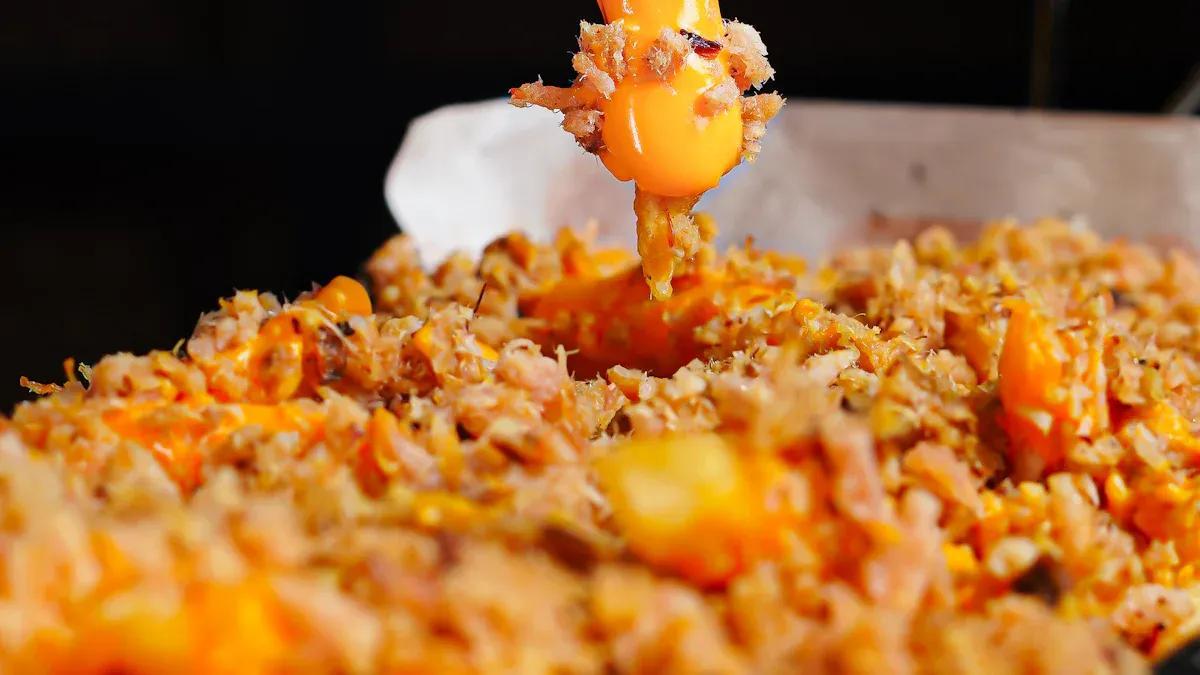
Tempura powder is not just for shrimp. You can make crunchy cheese sticks or soft avocado bites. You can also try ice-cream tempura, which is a new trend. Get some tempura powder at home and be creative. Try new flavors and textures in your kitchen. Don’t worry about making mistakes.
Key Takeaways
- Tempura powder can be used in many ways. You can make crunchy cheese sticks with it. Try making creamy avocado bites too. You can even fry ice cream with tempura powder.
- It is easy to make tempura batter at home. Mix flour, egg, and cold water together. This gives you a light and crispy coating. Be careful not to mix too much!
- If you want gluten-free tempura, use rice flour instead of regular flour. You can still make tasty tempura without gluten.
Surprising Foods with Tempura Powder
Tempura Cheese Sticks
Tempura powder can make cheese sticks crunchy and fun. The batter is lighter and crispier than normal breading. If you use ice water and hot oil, your tempura will turn out great. Look at this table to see what makes tempura batter special:
|
Technique |
Benefit |
|---|---|
|
Avoiding gluten development |
Lighter, crispier texture |
|
Using ice water |
Keeps batter cold and crispy |
|
Hot oil |
Makes cheese sticks extra crunchy |
Dip the cheese sticks in batter. Fry them until they look golden. Eat them with Pearl River Bridge teriyaki sauce.
Tempura Avocado
Tempura powder works well on vegetables like avocado. The inside stays creamy, and the outside gets crispy. To make the batter, mix these things:
|
Ingredient |
Quantity |
|---|---|
|
Egg |
1 |
|
Ice water |
To mix |
|
All-purpose flour |
Heaping tbsp |
|
Baking powder |
To mix |
Cut the avocado into slices. Dip each slice in the batter. Fry them and serve with ponzu sauce for a tangy dip.
Tempura Ice Cream
You can even use tempura powder for ice cream. Wrap a scoop of ice cream in bread and freeze it. Dip it in homemade tempura batter and fry it fast. The outside is hot and crispy, but the ice cream inside stays cold and soft.
Tempura Pickles
Tempura pickles are a cool snack. Dip pickle slices in batter and fry them. The batter keeps them crunchy. Try them with Pearl River Bridge kimchi sauce for more flavor.
Creative Tempura Tips
Tempura powder is not just for shrimp or Japanese tempura. Try it with mushrooms, sweet potatoes, or apple slices. Always use ice water for the batter. For the best tempura, keep everything cold. Japanese tempura should be light and crunchy. Eat your crispy tempura with Pearl River Bridge Japanese Seasoning sauces for a tasty meal.
Tempura powder can be used in lots of ways. Try making something new at home and find your favorite. You might be surprised by what you can make with it, like:
-
Cheese tempura (people love it, especially with Camembert and honey)
-
Avocado, ice cream, and pickles
Keep these tips in mind for crispy food. Check out Pearl River Bridge’s Japanese Seasoning collection for real Japanese flavors.
FAQ
Can I use tempura batter for sweet foods?
Yes! You can dip fruits or even ice cream in tempura batter. This gives you a crispy outside and a soft, sweet inside.
What oil works best for frying tempura powder recipes?
Use vegetable oil or canola oil. These oils help your tempura batter stay light and crispy. Always keep the oil hot for the best crunch.
How do I store leftover tempura powder?
Keep your tempura powder in an airtight container. Store it in a cool, dry place. This keeps it fresh for your next tempura adventure.

You can make eating fermented foods part of your daily routine without any stress. Pearl River Bridge brings you real flavor and tradition right to your kitchen. Fermented foods taste bold and delicious, and they help your body with probiotics and nutrients. You might love the way fermented foods wake up your taste buds. Try eating fermented foods with your breakfast, lunch, or even as a snack. You will discover how easy it feels to enjoy fermented foods every day.
Discovering Fermented Foods and Their Health Benefits
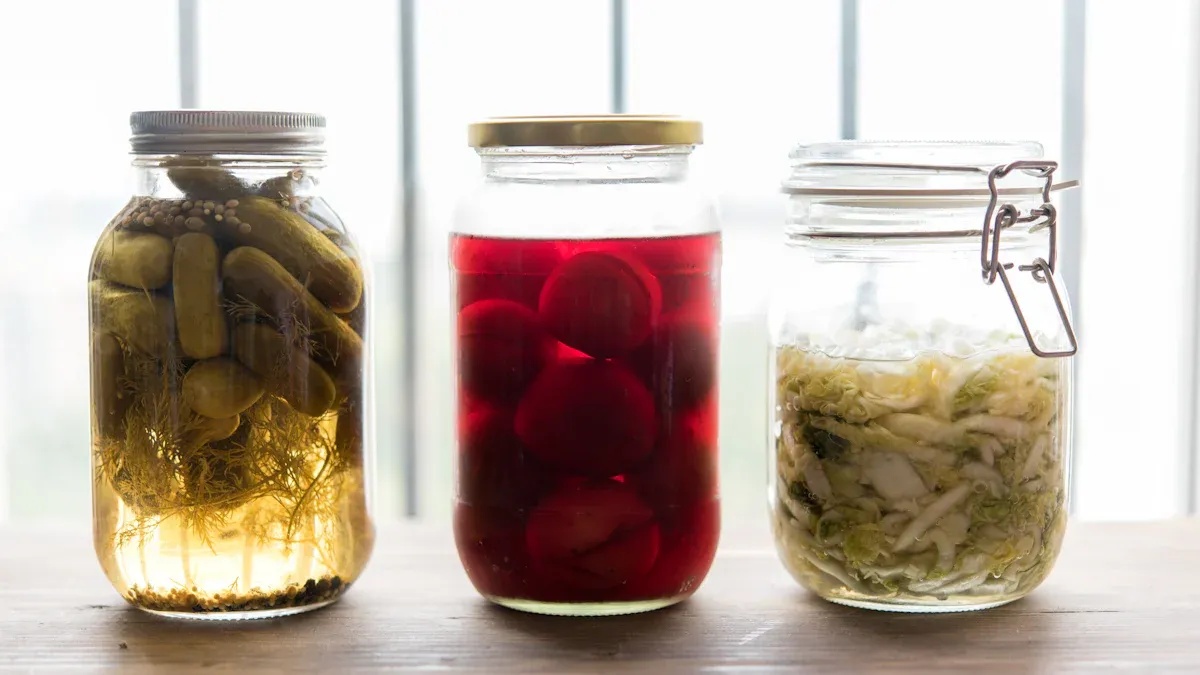
What Are Fermented Foods?
Fermented foods are made in a special way. Good bacteria change the sugars and starches in the food. This makes the food taste strong and gives it a different feel. People from many places eat fermented foods. Yogurt, kimchi, sauerkraut, and miso are some examples. Pearl River Bridge has many kinds of fermented foods. You can buy Fermented Red Beancurd, Preserved Beans, and Canned Fish. Each one adds something new to your meals.
Health Benefits of Fermented Foods
Fermented foods are not just tasty. They help your body in many ways. When you eat them, you get probiotics. These are good bacteria that help your stomach. You might feel your digestion improve and your immune system get stronger. Some people feel more energy when they eat fermented foods often. These health benefits make fermented foods a smart choice for your meals.
Flavor and Tradition in Pearl River Bridge Products
Pearl River Bridge makes fermented foods using old methods. You can taste the tradition in every bite. Fermented Red Beancurd gives your food a strong smell and color. Preserved Beans add a deep soy sauce taste. Canned Fish with salted black beans is easy and tasty. When you use Pearl River Bridge fermented foods, you get real flavors and a bit of history. You can try easy recipes or just add a little to your favorite food. There are many ways to enjoy them.
Cooking with Fermented Foods for Every Meal

Breakfast: Easy Ways to Start Eating Fermented Foods
You can start your day with a burst of flavor by adding fermented foods to your breakfast. Try spreading a small amount of Pearl River Bridge Fermented Red Beancurd on toast. The creamy texture and bold taste wake up your senses. If you like eggs, mix a spoonful of sauerkraut into your scrambled eggs. The tangy crunch makes every bite exciting. Some people enjoy kimchi with their morning rice or even in a breakfast burrito. You can also stir a bit of preserved beans into your oatmeal for a savory twist. These simple ideas help you enjoy fermented food in meals right from the start of your day.
Lunch: Quick Cooking with Fermented Vegetables and Beans
Lunch is the perfect time for adding fermented vegetables to your plate. You can toss sauerkraut into a salad for extra crunch. Try making a quick sandwich with sliced turkey, cheese, and a layer of kimchi. The spicy kick from the kimchi pairs well with the mild flavors. If you like noodles, add some Pearl River Bridge Preserved Beans and a handful of sauerkraut to your bowl. You can also try cooking fermented vegetables in a simple stir-fry. Just add them at the end so the fermented vegetables taste stays fresh and bright.
Dinner: Elevate Your Cooking with Fermented Sauces and Canned Fish
Dinner gives you a chance to try new flavors and recipes. Pearl River Bridge Canned Fish, like fried dace with salted black beans, makes a quick and tasty meal. You can serve it over steamed rice or mix it into a noodle bowl. For a cozy night, try making fermented beet soup. Add a spoonful of sauerkraut and a bit of kimchi to your soup pot. The flavors blend together and create something special. You can also use fermented chili beancurd paste as a dipping sauce for dumplings or roasted meats. Cooking with fermented foods at dinner helps you explore new tastes and traditions.
Snacks: Creative Ideas for Eating Fermented Foods
Snacks are a great way to enjoy fermented foods between meals. You can eat sauerkraut straight from the jar or pile it on crackers. Kimchi makes a spicy topping for avocado toast. If you want something crunchy, try Pearl River Bridge Sliced Mustard Tuber with rice cakes. You can even mix preserved beans into hummus for a salty, rich flavor. These snacks are easy to make and full of probiotics.
Here’s a quick snack idea:
- Top a small bowl of rice with kimchi and a drizzle of soy sauce. Add a few slices of cucumber for crunch.
You can see how adding fermented foods to your snacks keeps things interesting and tasty.
Tips for Cooking Fermented Vegetables and More
Simple Cooking Techniques
You can cook with fermented foods in many easy ways. Try adding a spoonful of Pearl River Bridge Fermented Red Beancurd to stir-fries. The flavor blends quickly with vegetables and meat. If you want a fast side dish, mix sauerkraut with sliced apples. Heat them together for a sweet and tangy treat. You can also mash preserved beans and spread them on toast. Cooking with fermented foods does not need fancy steps. Just add them near the end of cooking to keep their taste fresh.
Pairing Flavors with Fermented Foods
Fermented foods have bold flavors. You can pair them with mild foods like rice, noodles, or eggs. Try mixing kimchi with scrambled eggs for breakfast. Serve canned fish with plain steamed rice. If you want more crunch, add sliced mustard tuber to salads. You can also use fermented chili beancurd paste as a dip for fresh veggies. Here’s a table with pairing ideas:
| Fermented Food | Good Pairings |
| Fermented Red Beancurd | Stir-fried greens |
| Preserved Beans | Noodles, rice |
| Canned Fish | Steamed rice, veggies |
| Sliced Mustard Tuber | Salads, rice cakes |
Storing and Using Pearl River Bridge Products
You can keep most fermented foods in the fridge after opening. Make sure you close the lid tightly. This keeps the flavors fresh and stops them from drying out. If you use canned fish, store leftovers in a sealed container. Preserved beans and beancurd last a long time if you keep them cool and dry. Always check the label for storage tips. You will find that Pearl River Bridge products stay tasty for many meals.
FAQ
What are some common types of fermented foods I can add to my meals?
You can try yogurt, sourdough, salsa, lacto-fermented salsa, fermented hot sauce, and even add them to your salad. These foods taste great and help your body. You can find many of these in stores or make them at home.
How do I use salsa and lacto-fermented salsa in my daily meals?
You can spoon salsa or lacto-fermented salsa over eggs, mix them into your salad, or use them as a dip. Try adding salsa to tacos or even on top of sourdough toast for a quick snack.
Can I add fermented hot sauce to my salad or other foods?
Yes! Drizzle fermented hot sauce over your salad, tacos, or even pizza. You can also mix it into salsa for extra heat. Fermented hot sauce brings a tangy kick to sourdough sandwiches and yogurt bowls.
How can I enjoy yogurt and sourdough together?
You can spread yogurt on sourdough toast and top it with salsa. Try making a salad with torn sourdough, yogurt dressing, and a spoonful of lacto-fermented salsa. This combo tastes fresh and gives you lots of good bacteria.
What are some easy ways to add more fermented foods like salsa and salad to my snacks?
- Dip sourdough in salsa or lacto-fermented salsa.
- Top your salad with yogurt and fermented hot sauce.
- Make a quick snack with sourdough, salsa, and a side of yogurt.
- Buddha Jump Over the Wall1
- Canned Abalone2
- Canned Turtle Soup1
- Edible Bird's Nest2
- Frozen Foods1
- Frozen Seafood8
- Jelly/Pudding Applications1
- Meat Product Applications2
- Others Applications5
- Plant-based meat Product Applications1
- SURIMI2
- Soft Candy1
- Soft Candy Applications4
- bottle1
- can end2
- packaging film2
- tableware3



